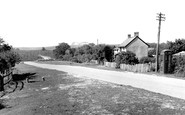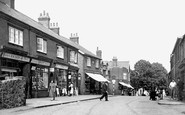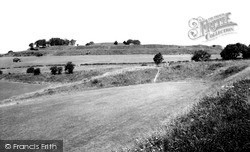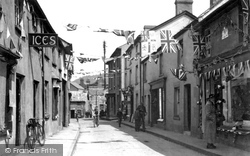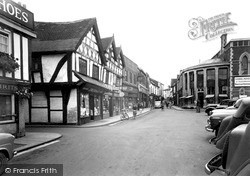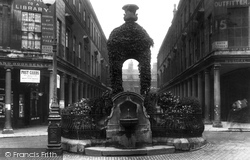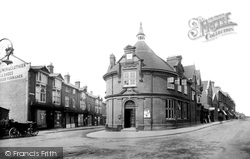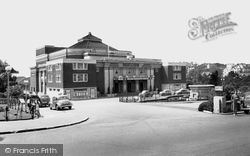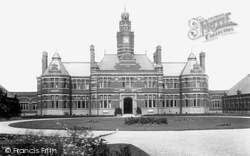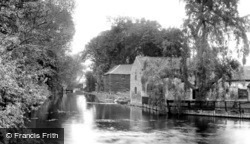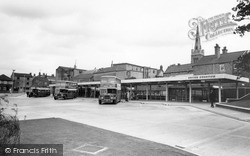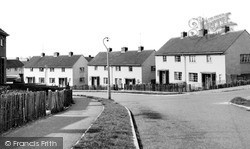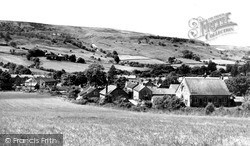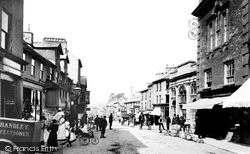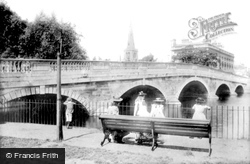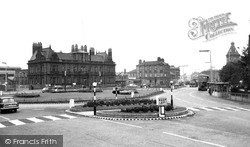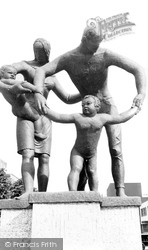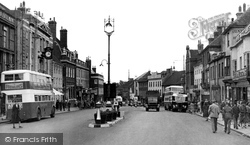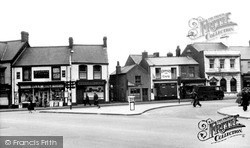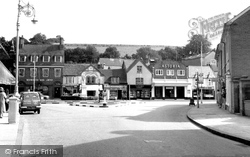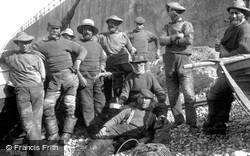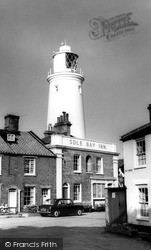Places
26 places found.
Those places high-lighted have photos. All locations may have maps, books and memories.
- Town End, Derbyshire
- Town End, Buckinghamshire
- Town's End, Somerset
- Towns End, Dorset
- Town End, Merseyside
- Town End, Cambridgeshire
- Town's End, Buckinghamshire
- West End Town, Northumberland
- Bolton Town End, Lancashire
- Kearby Town End, Yorkshire
- Town End, Cumbria (near Grange-Over-Sands)
- Town End, Cumbria (near Bowness-On-Windermere)
- Town End, Yorkshire (near Huddersfield)
- Town End, Yorkshire (near Wilberfoss)
- Town End, Cumbria (near Appleby-in-Westmorland)
- Town's End, Dorset (near Melbury Osmond)
- Town's End, Dorset (near Swanage)
- Town End, Cumbria (near Ambleside)
- Town End, Cumbria (near Lakeside)
- Town End, Cumbria (near Kirkby Lonsdale)
- Town End, Cumbria (near Ambleside)
- Town's End, Dorset (near Bere Regis)
- West-end Town, South Glamorgan
- Townend, Derbyshire
- Townend, Strathclyde (near Dumbarton)
- Townend, Staffordshire (near Stone)
Photos
26 photos found. Showing results 2,701 to 26.
Maps
195 maps found.
Books
160 books found. Showing results 3,241 to 3,264.
Memories
3,719 memories found. Showing results 1,351 to 1,360.
Growing Up In Clydach
I was brought up in this small village, lived at 1, St John's Road with my grandparents Frank and Emily Potter. Then, when the prefabs were built in Graig-Felen, my parents and my two sisters moved there. My dad ...Read more
A memory of Clydach in 1959 by
Linwood C1968
This picture is of Queenie Shuttler's cottage. She used to keep a cow and made the most delicious cream. Her brother, Les Shuttler, drove me to and from the bus stop, about 4 miles away at the White Hart, Poulner, to go to school at ...Read more
A memory of Linwood in 1968 by
Pre Post World War 2
Attended Houghton Road Junior School, then in 1944 the Hill School. Lived 45 Windsor Street. Memories going to school eating breakfast of bread and dripping, transporting a ton of coal from the street to the coal house at ...Read more
A memory of Thurnscoe by
Living In Streethouse
I lived at 136 Meadway, out of the back door, down the garden and on to fields. My Aunty Lucy never locked the door when we went to shop, you could trust people then, happy days.
A memory of Streethouse in 1960 by
Part 15
I remember Peter went in one day for a cup of tea, and stayed chatting. The horse got fed up waiting and came home five miles away. Peter was fuming; he had to walk home, and lost half a day’s earnings. He was ribbed rotten about ...Read more
A memory of Middle Rainton in 1945 by
When I Was Young
I was born 1948 in Chop Well and lived in South Terrace down by Mark and Lenin Terraces. Played cricket for the juniors and had friends called Bill Bailley and John Baum. My cousins where Tom and Bill Hughes. My eldest brother was ...Read more
A memory of High Spen in 1948 by
Childhood Memories
I was born in Templecombe Hospital in 1956. My dad is Ron Hatcher who was also born in Templecombe. We lived in Templecombe until I was three years old then moved to Castle Cary, but returned frequently to visit my grandparents ...Read more
A memory of Templecombe by
School In The 50s
One of my earliest memories of school in Easington is of Miss Nicholson telling my mother, Alice Stephenson, nee Griffiths, that she would look out for me when I started at Easington Infants. Actually, I was never in her ...Read more
A memory of Easington Colliery by
A Young Boy In Cranford 1949 1955
My name is Michael Mancey. In 1949, when I was four years old, my parents, youngster sister and I, moved to a brand new council house in Windsor Road. Although the postal address was Hounslow West, it was in reality ...Read more
A memory of Cranford in 1950 by
Rothley My Home
It is now 41 years since I resided in Rothley, and there is not one day that passes that I don't think about it. Recently I found photographs on an 'Old Rothley' website, as I was browsing I found a photograph of my parents standing ...Read more
A memory of Rothley by
Captions
5,111 captions found. Showing results 3,241 to 3,264.
Its spectacular ramparts and ditches enclosed their community. The inner rampart would have had a wooden stockade.
Talgarth is a small town a few miles south of Hay-on-Wye. Its narrow streets today are almost always congested with passing traffic.
Notice the old Town Hall on the right hand side of the photograph – now sadly destroyed and replaced by an extremely bland 1960s building.
The colonnaded street behind, part of the 1789 Bath Improvement Act scheme, is an elegant piece of Georgian town planning.
The Old Bank building, which stood at the junction of Chertsey Road, High Street and Broadway, failed to survive the post Second World War swathe of redevelopment which saw many of the town's Victorian
The Pavilion Theatre and Ballroom was established in 1928, and has remained popular with visitors ever since.
The only medical institutions listed on the Johnson & Green street plan of 1868 are the Convalescent Home & Sea-Bathing Infirmary, and the Hydropathic Hospital.
The only medical institutions listed on the Johnson & Green street plan of 1868 are the Convalescent Home & Sea-Bathing Infirmary, and the Hydropathic Hospital.
A closer view of Market Place, minus its Saturday morning stalls and with only the refreshment stand by the lamp- post facing onto the 17th- and 19th-century shops and offices.
The mill occupies an island between the two rivers, Thet and Little Ouse.
Until the 1960s, most people relied on public transport, and the green-liveried buses of United Counties carried workers and shoppers in and out of town on busy timetables.
Wollaston expanded farther after World War II and this view is of former council housing, part of an estate built in the south-east of the town.
It was a boom town during the 19th-century iron-mining era, and takes its name from the remains of a 12th-century Cistercian nunnery, now built into the parish church.
Kendal—the 'Auld Grey Town' on the River Kent—was founded on wealth won from the wool of Lakeland sheep. Stricklandgate, the northern extension of Highgate, is one of Kendal's main thoroughfares.
Besides being empowered to replace the bridge, they cleared away numerous houses near St Paul's Church and the medieval Guildhall in their zeal - no doubt the area was in serious decay.
The original intention was that there should be a tower on top of the Town Hall but the local people felt it looked quite grand enough as it was and so did not bother to add it.
The founders of the modern Billingham Town Centre felt the need to introduce features which helped to take away the starkness of the new surroundings.
Despite the fact that post-war rationing was still in force, this market town was thriving. On the left is an optician's, A Bateman's.
Billy Hole, whose newsagent's, stationer's and tobacconist's shop we see on the left, was an interesting character.
This is a view over Low Town from about one hundred feet above the Severn.
Looking east from Blucher Street this view shows how steeply the chalk hills rise behind the town, still undeveloped.
Their clothes were strong, too, and water-resistant, especially the knitted jumpers which were made in the town with specific designs for individual families, a very similar idea to the tartan of
Holt, between Fakenham and Cromer, boasts a wealth of fine Georgian houses, which huddle haphazardly around its broad market place.
The strangely landlocked lighthouse was safely positioned away from the cliff edge but not too central in the town, where the smoke from coal fires might have obscured the light.
Places (26)
Photos (26)
Memories (3719)
Books (160)
Maps (195)



